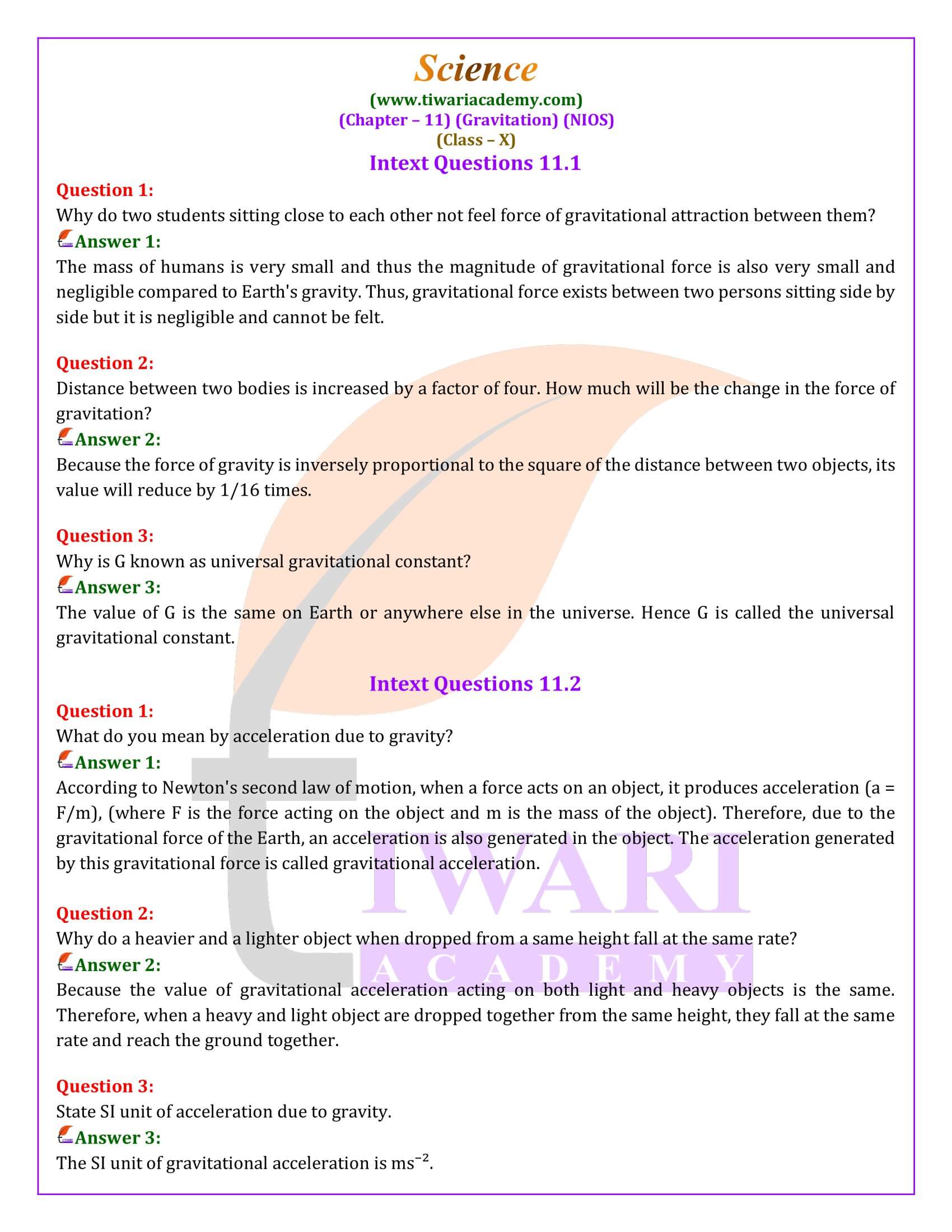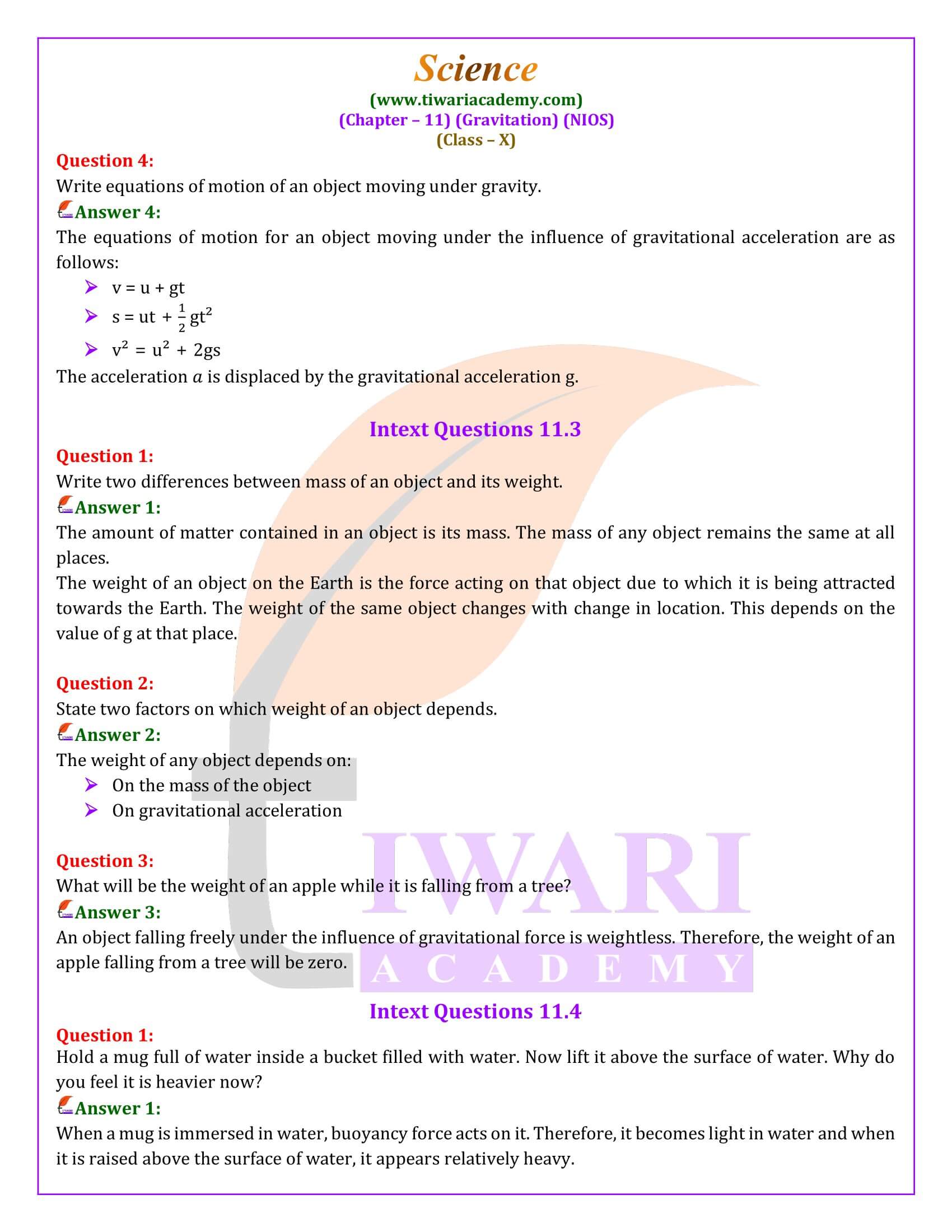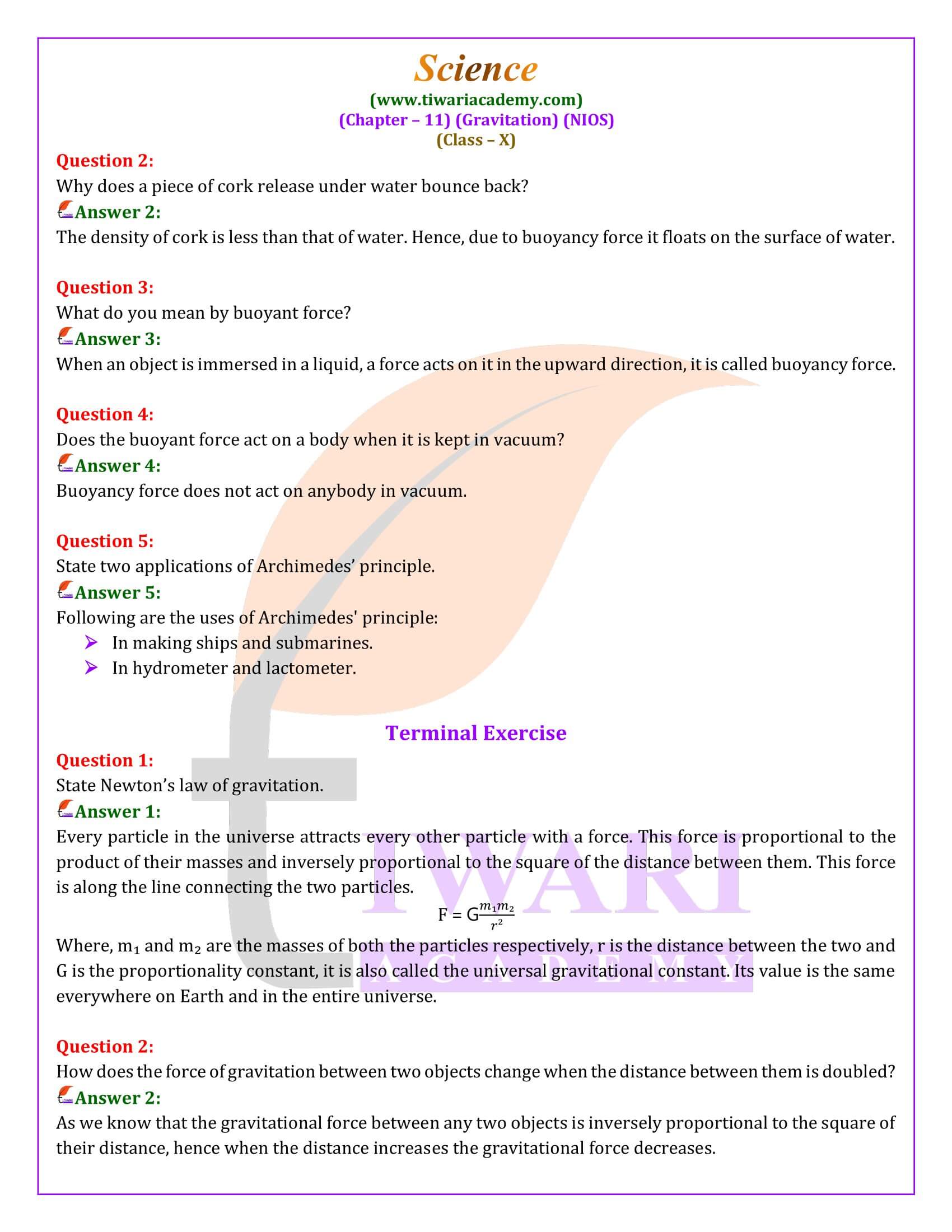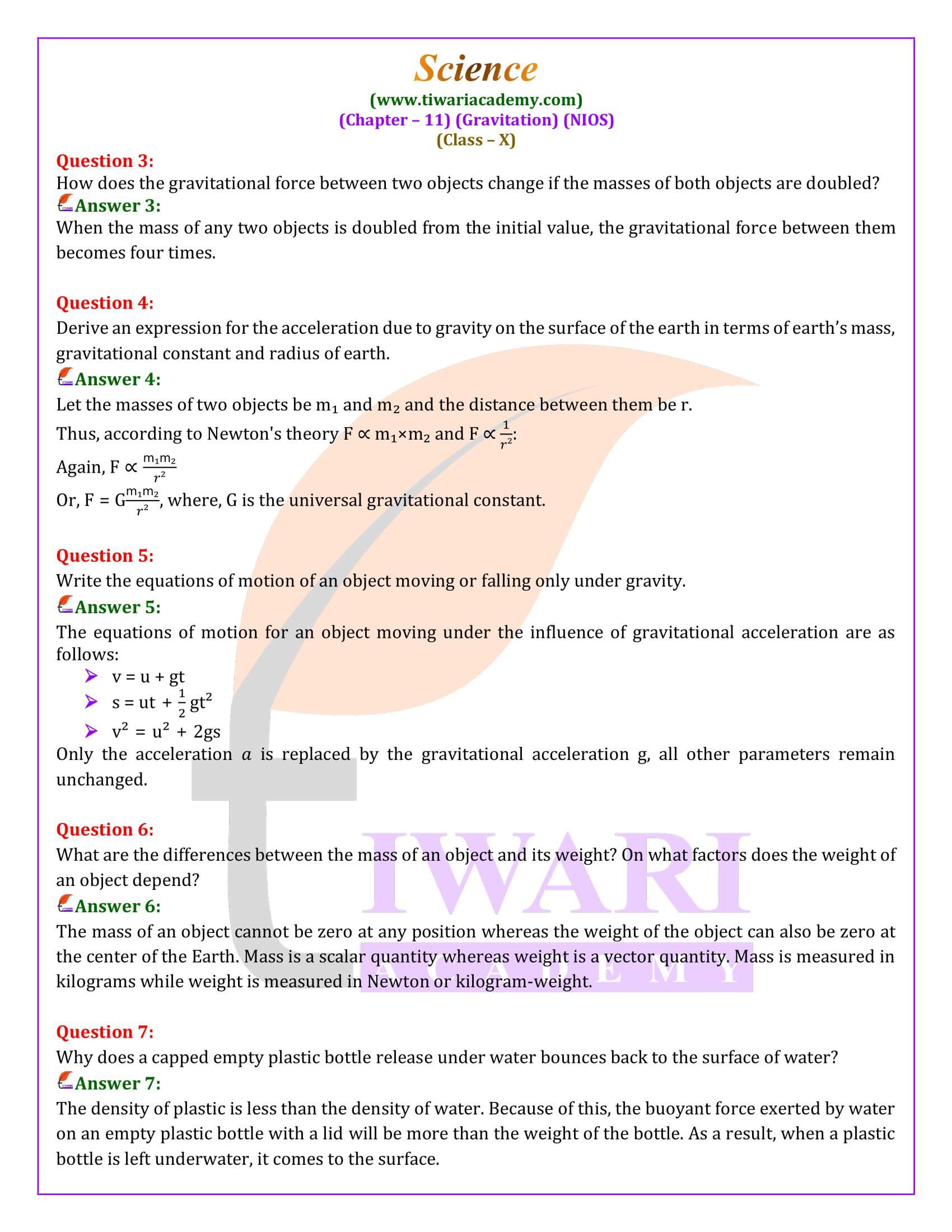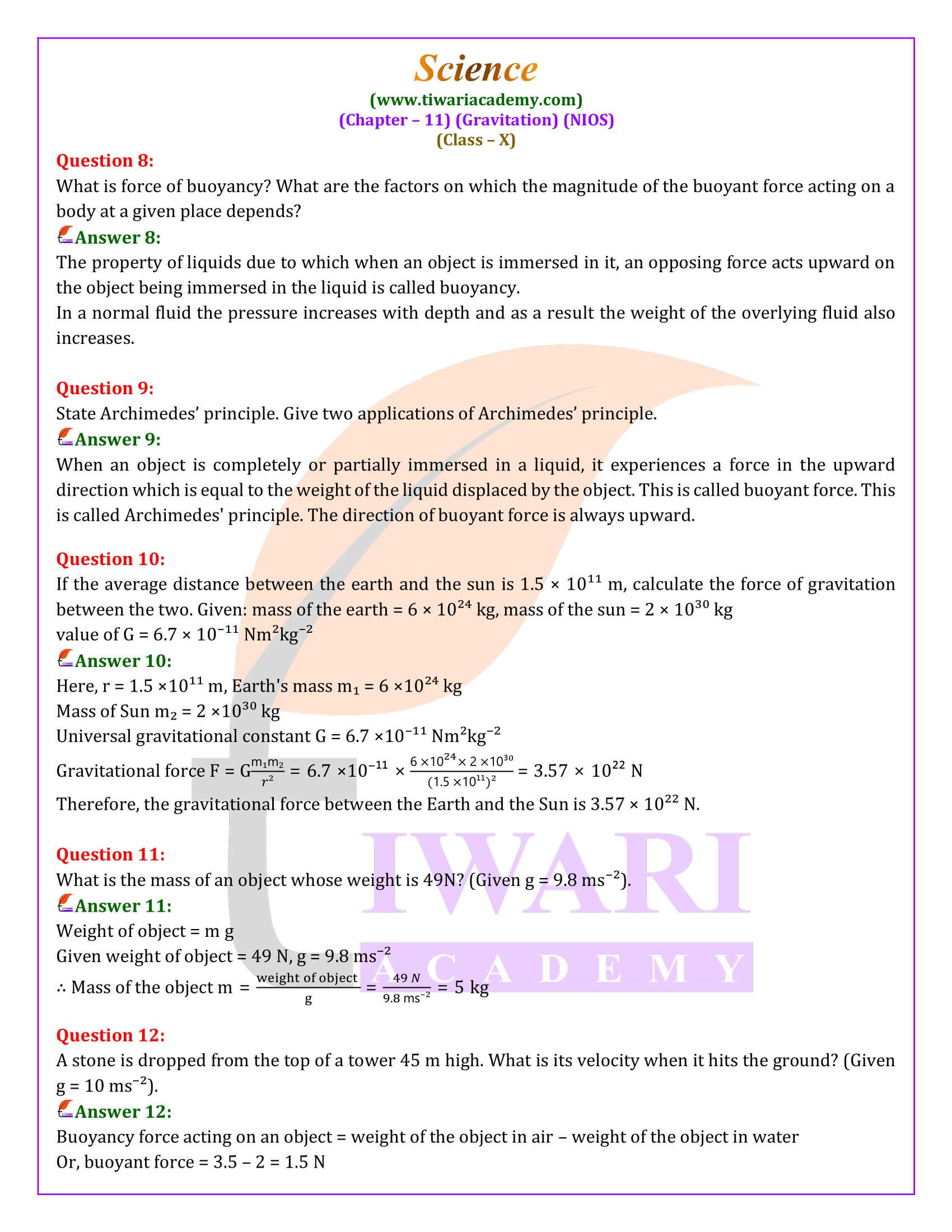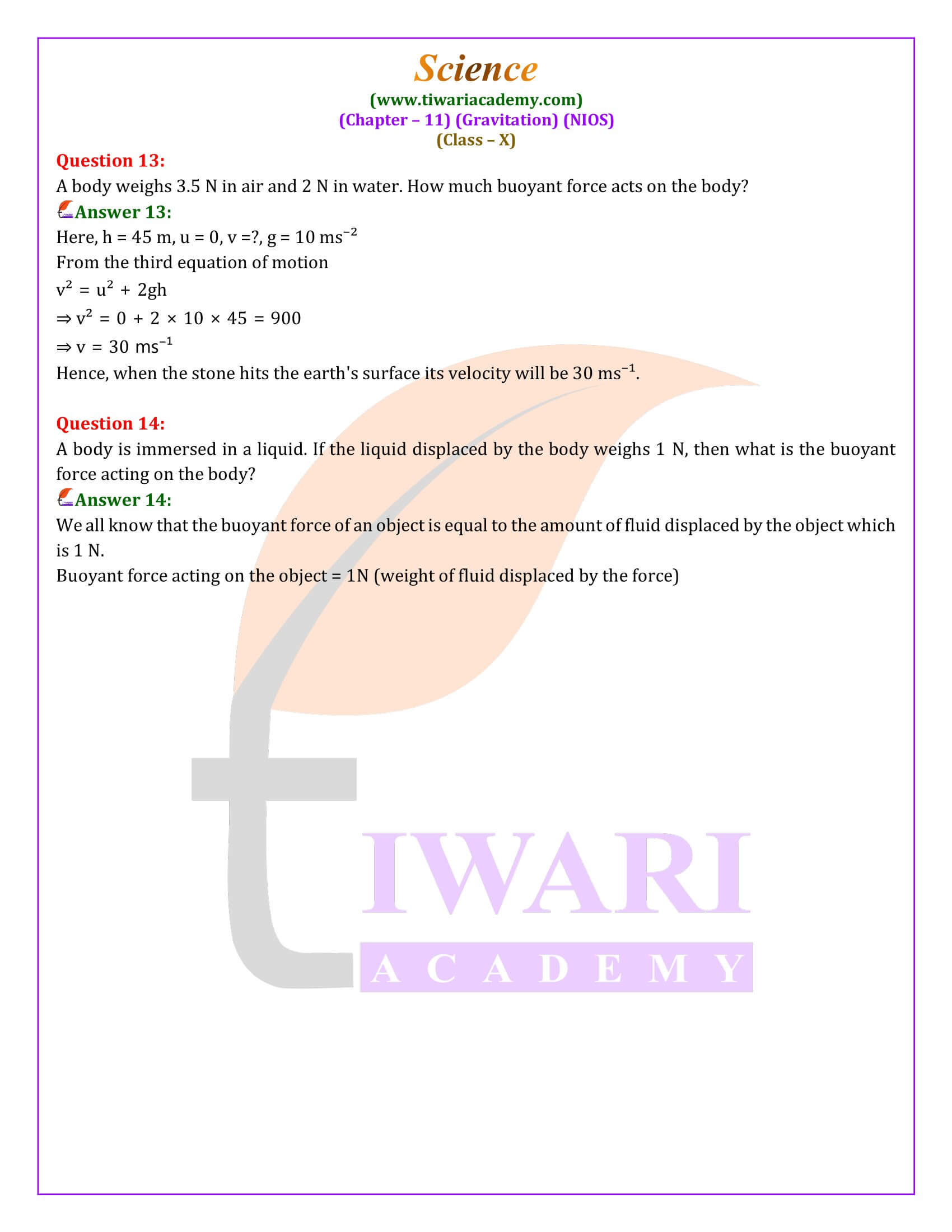NIOS Class 10 Science Chapter 11 Gravitation in Hindi and English Medium revised and updated for new academic session 2025-26. Students of NIOS can learn the Science chapter 11 question answers in simple format here.
Gravitation: The Invisible Force that Binds the Universe
Gravitation is a fundamental force that is essential to our understanding of both the cosmos and the everyday world. This chapter delves into the concept of gravitation, starting with our daily observations of objects falling towards Earth. This phenomenon piqued the curiosity of many, including Sir Isaac Newton, who formulated the Universal Law of Gravitation. This law posits that every particle in the universe attracts every other particle with a force proportional to the product of their masses and inversely proportional to the square distance between them. The chapter meticulously explains the components of this law, providing a mathematical basis for understanding gravitational interactions.
Through engaging activities, readers are introduced to concepts such as the force of gravitation, acceleration due to gravity, and the distinction between mass and weight. These activities are designed to clarify how gravitational forces influence motion, providing insights into why objects fall at the same rate, regardless of their mass, in the absence of air resistance. This concept is further illustrated through the experiment of dropping stones from different heights, underscoring the constant acceleration due to Earth’s gravity.
Gravitational Force
The NIOS Chapter 11 describe Newton’s profound realization that the same gravitational force that causes an apple to fall to the ground also keeps the moon in orbit around the Earth. This revelation highlights the universality of gravitation, extending its reach beyond our planet to the furthest corners of the universe. Newton’s Law of Gravitation is elaborated upon with mathematical formulations, demonstrating how the gravitational force between two objects can be calculated. This law’s implications are vast, affecting everything from the motion of celestial bodies to the tiniest interactions on Earth.
Acceleration due to gravity is another focus area, emphasizing its significance in determining the motion of objects under the influence of Earth’s gravitational pull. The chapter explains how this acceleration is consistent for all objects, regardless of their mass, leading to the concept of free fall. The equations of motion under gravity are modified to account for this acceleration, providing a framework for solving various problems related to motion under the influence of gravity.
Gravitational Pull
The distinction between mass and weight is crucial, with mass being a measure of the amount of matter in an object and weight being the force exerted by gravity on that mass. This distinction lays the groundwork for understanding why objects weigh less on the moon than on Earth, due to the differences in gravitational pull. The chapter 11 explores scenarios illustrating weightlessness, such as astronauts experiencing apparent weightlessness in space, providing a visceral understanding of how gravity influences weight.
Buoyancy and Archimedes’ Principle are also covered, explaining how objects experience an upward buoyant force when immersed in a fluid. This principle has practical applications in designing ships and submarines, demonstrating the pervasive influence of gravitational and buoyant forces in engineering and technology.
Newton’s Law of Gravitation
The universality of gravitation is underscored, from its role in the cosmos to its effects on everyday objects. Newton’s Law of Gravitation is highlighted as a cornerstone of physics, providing a mathematical foundation that has propelled our understanding of the universe. The chapter concludes by inviting readers to explore further the implications of gravitation in various domains, from celestial mechanics to the development of technology that harnesses gravitational and buoyant forces.
In essence, this exploration of gravitation not only illuminates the invisible force that shapes our universe but also reveals the interconnectedness of all matter. Through a blend of historical anecdotes, theoretical explanations, and practical activities, readers are invited to appreciate the profound impact of gravitation on both the macroscopic and microscopic scales.
